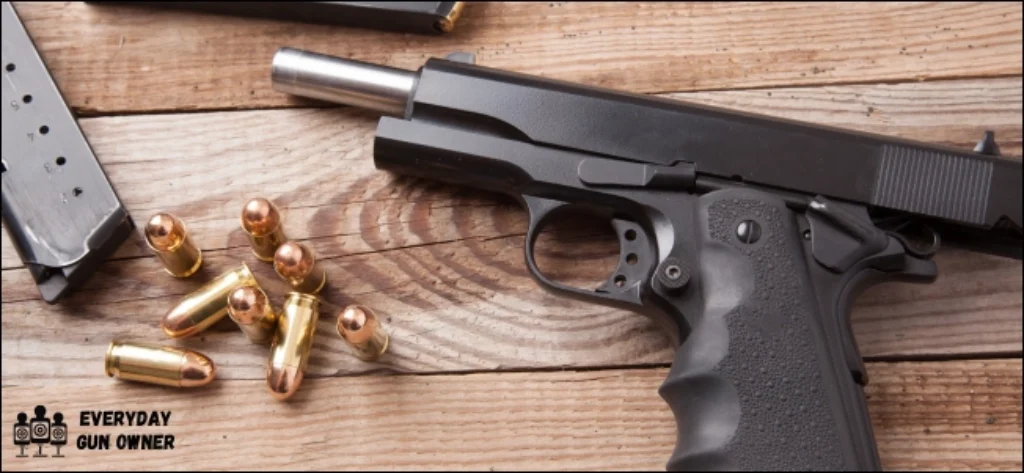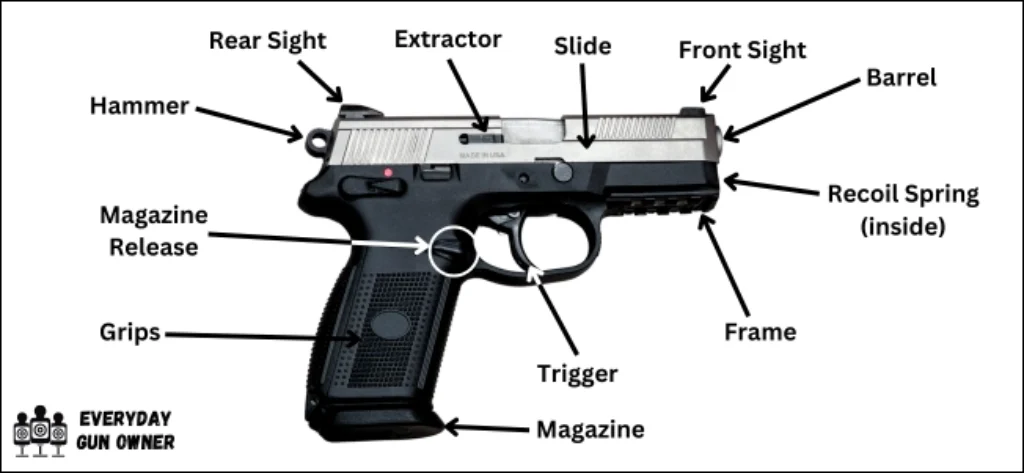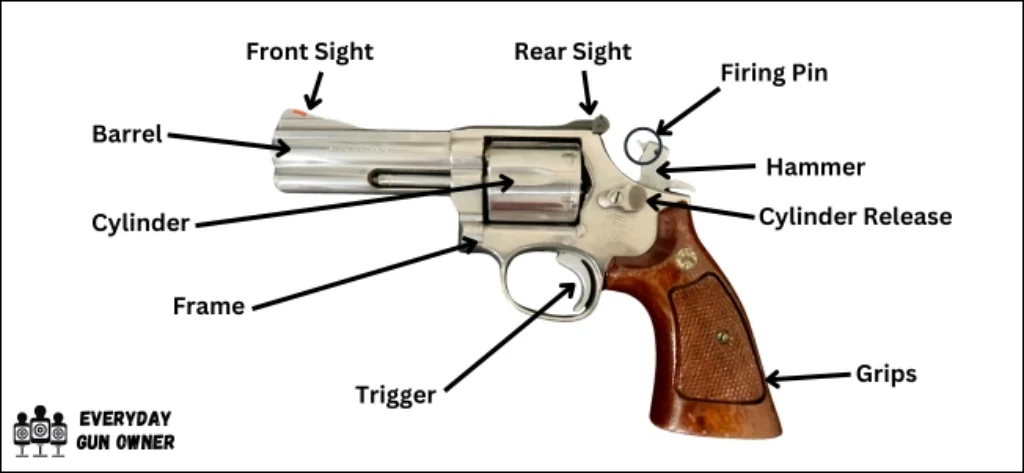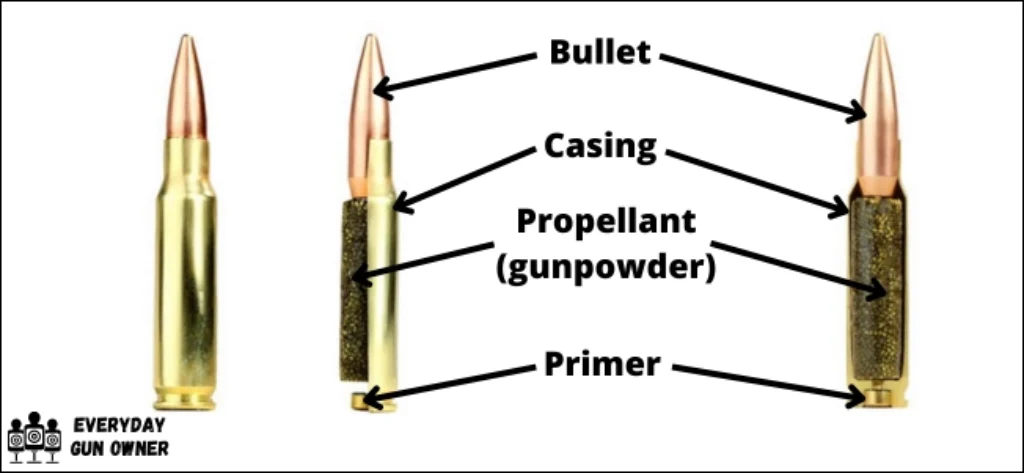
Hello Everyday Gun Owners! Ever looked at a handgun and felt a bit overwhelmed? Don’t worry—you’re not alone. Understanding the different parts of your handgun is the first step toward feeling confident and safe with it. In this guide, we’ll break down the basics, helping you move from uncertainty to competence.
If you’re here, you want to better understand your handgun. Perhaps you’re a new owner who feels somewhat intimidated by firearms. That’s completely natural. Many people starting their journey with firearms for home defense share these feelings. It’s like learning a new language—initially daunting, but entirely manageable.
During my 30+ years with firearms, including formal training since 1988 and 12 years in the military (both enlisted and as a Chief Warrant Officer in the Army Reserves), I’ve witnessed how complex gun parts can seem at first. Everyone starts as a beginner. I’ve been there myself, and I’m here to guide you through it.
This guide is specifically for you—the new gun owner, the home defense-minded individual, the person seeking clear information. We’ll use plain English and avoid technical jargon, keeping everything straightforward and accessible. Consider me your experienced guide, sharing knowledge gained through decades of experience—no sales pitch, just practical information.
Ready to understand your handgun better? Let’s begin!
Parts of a Handgun: A Home Defender’s Overview
Understanding your handgun thoroughly is essential for home defense. It’s about more than ownership—it’s about knowing how your firearm functions for responsible and effective use. Home defenders typically choose between two main handgun types: semi-automatic pistols and revolvers. Semi-automatics offer larger ammunition capacity and quick reloading, while revolvers excel in simplicity and reliability. Whichever you choose, understanding its operation is crucial for your safety and your family’s protection.
Parts of a Semi-Automatic Handgun: Your Home Defense Companion
Semi-automatic pistols are popular for home defense because of their magazine capacity and quick reloading capability. They fire one round per trigger pull while automatically loading the next round. Here are the essential parts:

- Barrel: The metal tube through which the bullet travels when fired. Its length and quality affect accuracy and velocity. Regular cleaning of the barrel ensures consistent performance and longevity.
- Extractor: A small mechanism that grips and pulls the spent cartridge case from the chamber after firing, ejecting it through the slide’s ejection port. A reliable extractor ensures smooth cycling and prevents jams.
- Firing Pin: A small component that strikes the cartridge’s primer to initiate the firing sequence. Understanding its function helps with maintenance and ensuring reliable operation.
- Frame: The main body of the pistol, which houses the trigger mechanism and supports other components like the slide and barrel. The frame includes the grip area, providing stability and control during firing.
- Hammer: A component that strikes the firing pin or directly impacts the cartridge primer to fire the round. Some semi-automatics have external hammers, while others use internal strikers. Proper hammer function is critical for reliable firing.
- Magazine: The container that holds your ammunition. Magazines come in different sizes, each holding a specific number of rounds. Choose a capacity that balances effectiveness with comfortable handling. Regular magazine change practice is important.
- Magazine Release: A button or lever that releases the magazine from the pistol for reloading. Familiarity with its location and operation allows for quick and efficient magazine changes under stress.
- Recoil Spring: This component absorbs recoil energy and returns the slide to its forward position, ready for the next shot. Its proper function enables quick, accurate follow-up shots when needed.
- Safety Mechanisms: Semi-automatic pistols feature multiple safety devices, including manual safeties, grip safeties, and drop safeties. These prevent accidental discharge—particularly important in homes with children. Understanding each safety feature is vital.
- Slide: The top portion that moves back and forth during firing. It contains the ejection port for spent casings and the sights for accurate aiming. Smooth slide operation ensures reliable follow-up shots.
Parts of a Revolver: The Classic Home Protector
Revolvers offer reliability and simplicity for home defense. They store ammunition in a rotating cylinder. Here are the key components:

- Barrel: The metal tube through which the bullet travels when fired. Its length impacts accuracy and ease of use. A clean, well-maintained barrel ensures reliable performance.
- Cylinder: The rotating component that holds the cartridges. Each chamber lines up with the barrel for firing. Most revolvers hold five to eight rounds. Choose the capacity that fits your needs.
- Cylinder Release: This mechanism allows cylinder opening for loading and unloading. Quick, efficient reloading requires practice and familiarity.
- Firing Pin: A small pin that strikes the cartridge primer to ignite the propellant and fire the round. In some revolvers, it’s mounted on the hammer; in others, it’s part of the frame. Its proper function is essential for consistent firing.
- Frame: The structural backbone of the revolver, holding the cylinder, barrel, and grip together. It provides durability and balance, contributing to the firearm’s overall stability during use.
- Grip: Your handhold on the revolver. A proper grip ensures control and accuracy, especially under stress. Regular practice improves stability and recoil management.
- Hammer: This mechanism strikes the firing pin or primer, discharging the firearm. Hammers can be external or internal. Understanding its operation is essential for safe handling.
Parts of a Bullet: Understanding Your Ammunition

While not part of the handgun itself, understanding ammunition components is crucial. Each cartridge has four main parts:
- Bullet: The projectile that leaves the barrel. Hollow point bullets are common for home defense due to their effectiveness.
- Case: The container holding all components together.
- Propellant: The powder that creates the energy to launch the bullet.
- Primer: The component that, when struck, ignites the propellant.
Resources and Further Learning
For more in-depth firearms knowledge, consider these resources:
- NRA Basic Pistol Shooting Course
- USCCA (United States Concealed Carry Association)
- Local gun ranges often offer introductory classes and home defense courses.
Continue Your Firearms Education
Ready to expand your firearms knowledge? Explore these helpful articles:
- Gun Safety in the Home: A Guide for Every Gun Owner
- Revolver vs Semi Auto: Ultimate Home Defense Showdown
- What is a Carbine: Your Home Defense Guide
Conclusion: Your Home Defense Handgun Journey
We’ve explored the essential components of handguns, from semi-automatics to revolvers, including ammunition basics. Remember: understanding your firearm is fundamental to safe and responsible ownership, especially for home defense. Continue learning, maintain regular practice, and always prioritize safety. You’re developing into a knowledgeable and prepared home defender.
